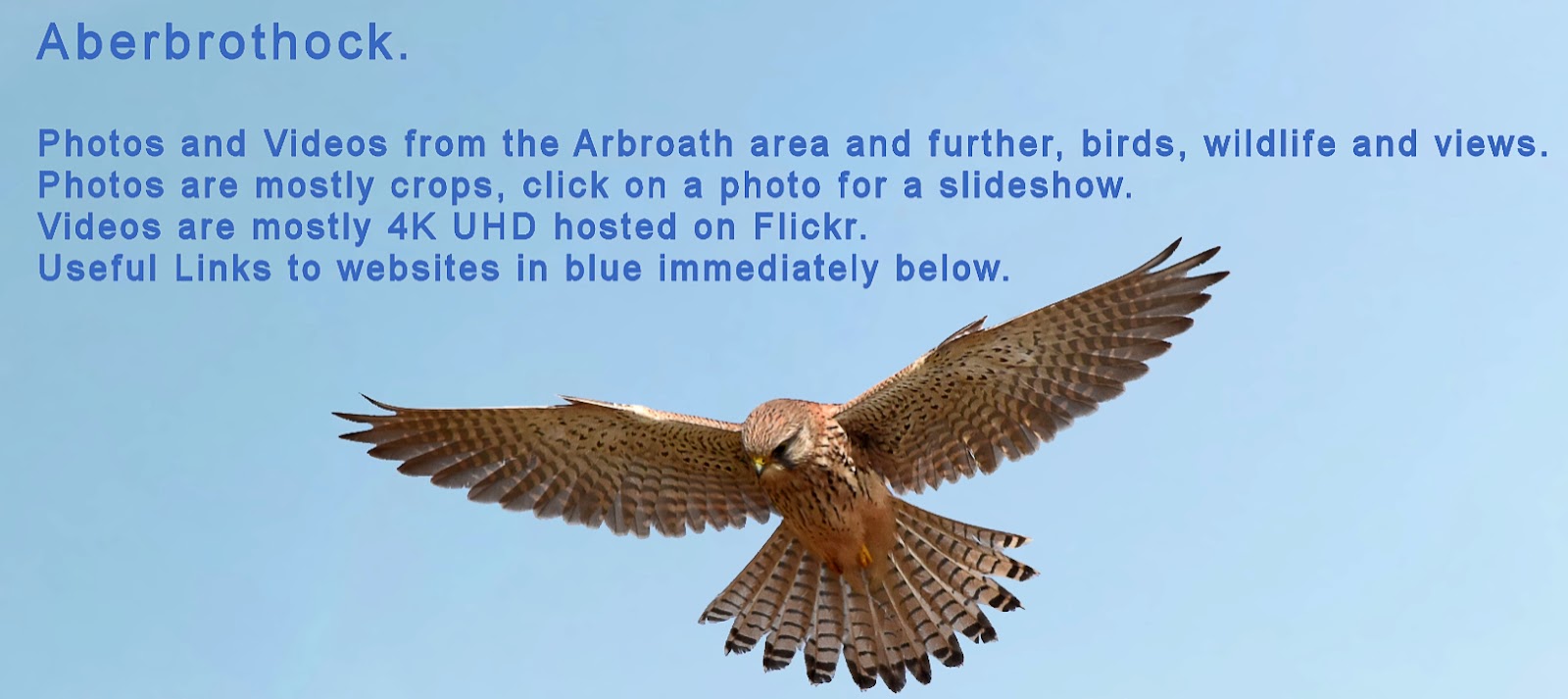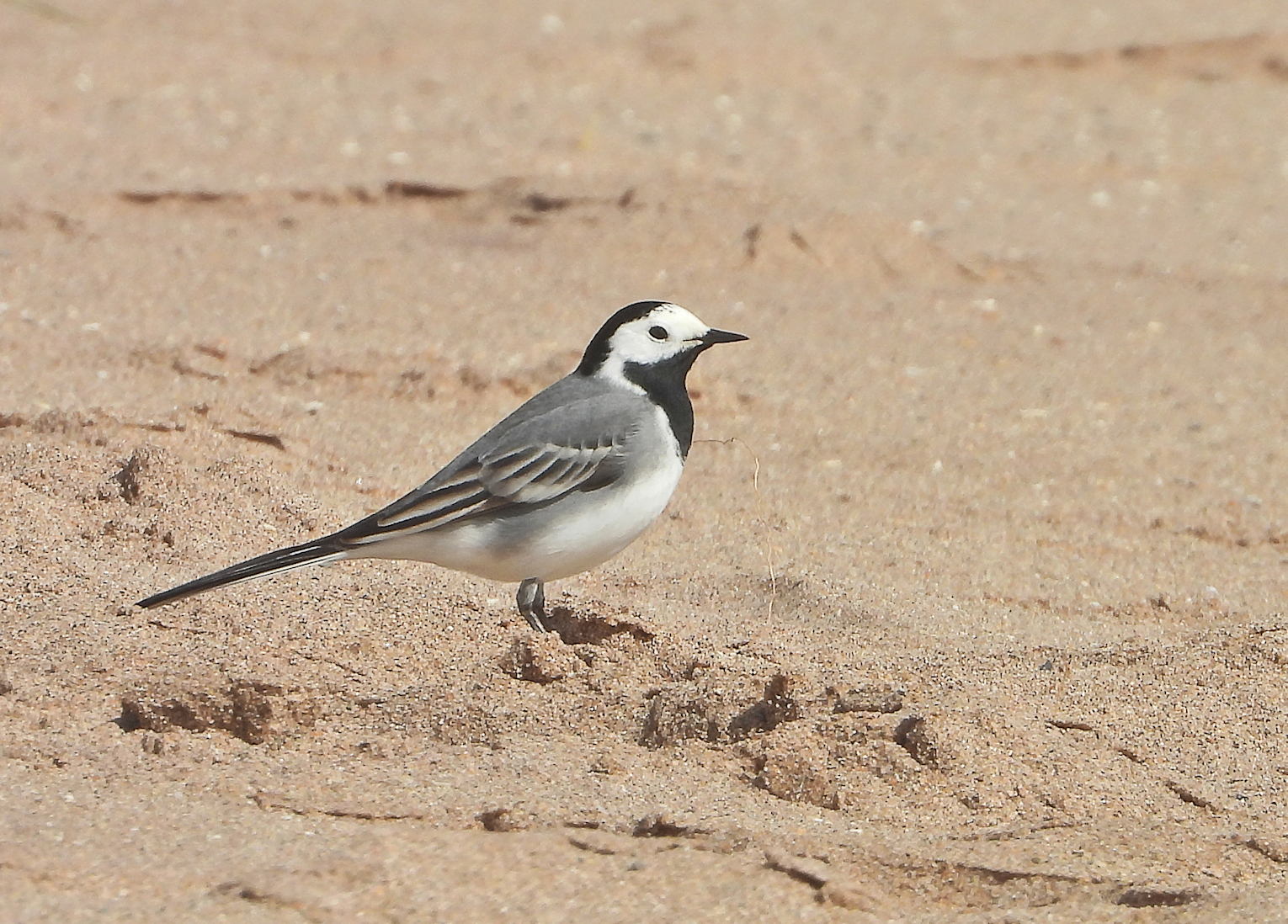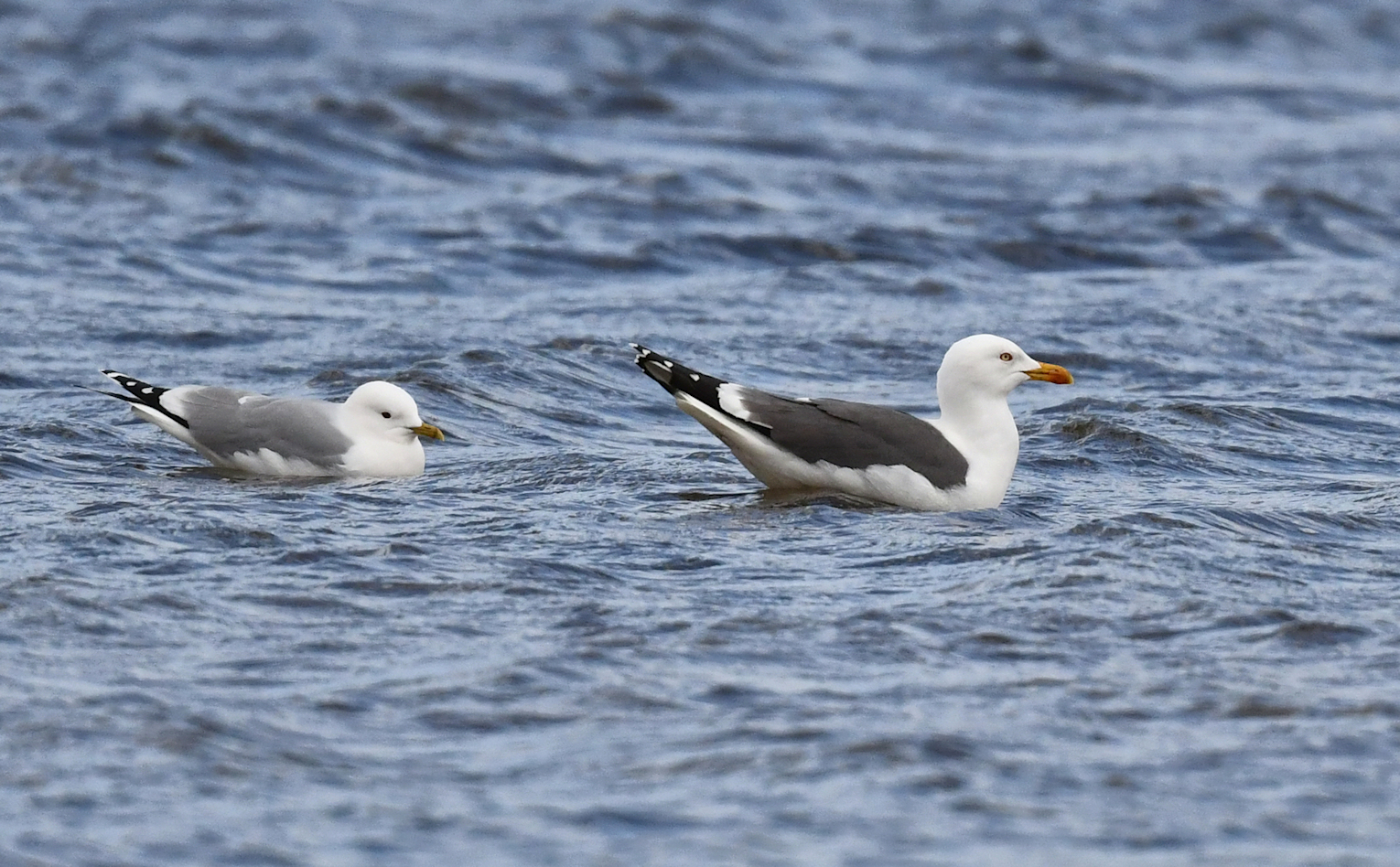A short walk from East Haven to Hatton wasn't very productive in a strong wind, just 2 Wheatears, 1 White Wagtail, a pair of Stock Doves, 6 Reed Buntings (3 pairs), a Yellowhammer, 2 pairs of Pied Wagtails, 6 Linnets, 4 Goldfinches, and a single Swallow.
Craigmill Den. I had a brisk walk up the path to the weir using the Merlin App bird sound tool, and it picked up many species, most I could also hear despite a sinus problem, and the App alerted me to others which I could then search for.
Three videos filmed from inside my house
House Sparrow bathing in UHD Yellowhammer male Tree and House Sparrows filmed from my settee!
Wheatear male at Hatton, north of East Haven
Pied Wagtails nest along the railway margins and will hunt flies from the rails and fences
Male Reed Bunting photographed into the morning sunlight
Yellowhammer, a few pairs nest near the railway in the last remnants of gorse bushes
Although there are many temporary pools in the coastal field at present, I could only find a single Mallard drake
A Grey Wagtail collecting nest materials on the path at the bottom of Craigmill Den
One of at least four Chiffchaffs heard and seen in the den
A close view of a Dunnock that appeared in front of me while I watched a pair of Stock Doves in nearby trees



















